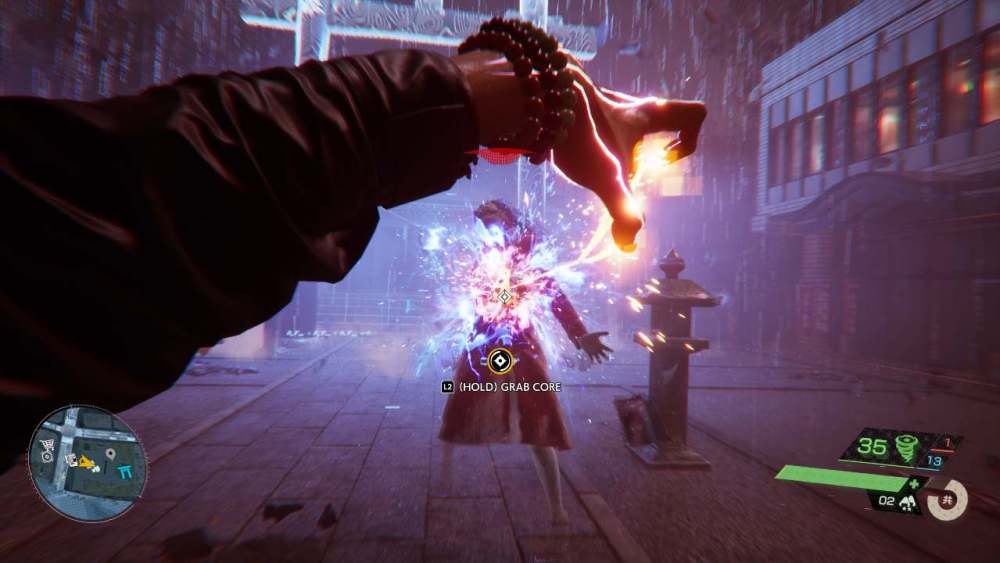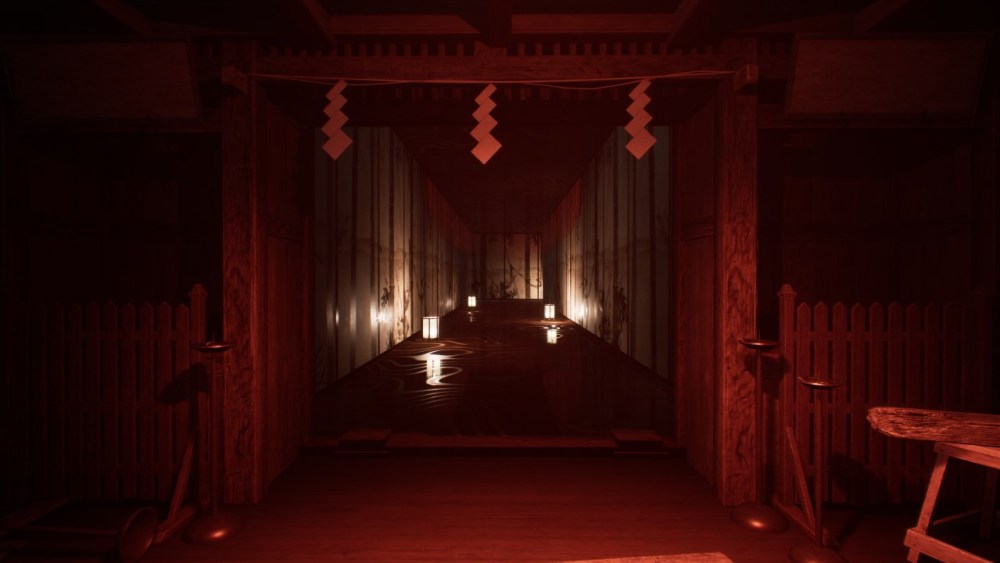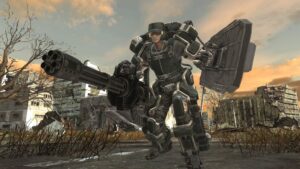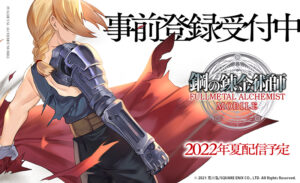Ever since Ghostwire: Tokyo was revealed back at E3 2019, I’ve been dying to know more about it. The setting, music, and overall presentation felt like a spiritual horror anime brought to life in the form of a video game, which immediately had me on the edge of my seat.
Combine its ambiance with the fact that it’s being developed by Tango Gameworks, creators of renowned horror series The Evil Within, and it is easy to understand why I’ve been eager to see more content. Luckily, I was able to attend a preview event for the game a few weeks ago, which showed off all of the supernatural fun Ghostwire: Tokyo will have to offer.
This unique demo for Ghostwire: Tokyo starts off with a bit of backstory, as it detailed that the game’s protagonist, Akito, has fused with the spirit of an experienced ghost hunter, KK, who got killed. Together, Akito and KK have to use spiritual powers to defeat various enemies, called Visitors, so that they can keep the antagonist from hurting Akito’s sister and save Tokyo.
After the backstory, the demo picks up very early on in Ghostwire: Tokyo, with Akito openly exploring the city while KK describes the situation and the power he now wields. Combat occurs almost immediately, with the protagonist firing finger-gun rays of energy at Slender Man-looking enemies with umbrellas.

Known as Ethereal Weaving, this attack is just one of the many weapons players have at their disposal in Ghostwire: Tokyo. Thanks to the help of KK, Akito is able to find and imbue weapons, like a bow-and-arrow, with spiritual power so that he’s able to use them in combat.
Alongside weapons, Akito can also sneak up on opponents and use stealth attacks to defeat them quickly and quietly. These gameplay elements demonstrate that the game will have a wide variety of ways to approach situations when it comes to combat.
Seeing this was a huge relief, as I was a bit skeptical of the gameplay loop being too action-heavy when I originally saw the trailers. For me, one of the best parts of The Evil Within was sneaking around and stealth killing enemies. It added to the desperation and fear of the situation by showing my character was approaching things cautiously while also making combat feel more diverse.
Something else I noticed pretty quickly in Ghostwire: Tokyo is that despite being set in a desolated version of Shibuya, the streets were still somehow brimming with life. Whether it was the creepy enemies that filled the streets, the feline yokai vendors, or the friendly spirits, the setting was still somehow more alive than games that have massive crowds of NPCs.
There are even a lot of sidequests to explore in Ghostwire: Tokyo, in which Akito will help wayward spirits find their way to net some big rewards. One such quest occurs about halfway through the demo, as an old lady spirit asks for help finding her granddaughter.
She explains that she’s stuck around even after death because she believes that the no-good landlord has kidnapped her granddaughter and is holding her spirit hostage. After investigating the area in question, it is revealed that this is indeed the case, prompting Akito to destroy an item that sets the victim free.
Returning to the grandma spirit not only puts her at ease and sets her free but also offers up a Zashiki Warashi that can be used to improve spiritual power as a reward. According to Tango Gameworks, this is just one of the many interesting quests players will find throughout Shibuya.
After this little detour, Akito sets his sights back on figuring out what is going on with the main story. This takes him to KK’s apartment, where there seemed to be lots of interactable items that you don’t necessarily need to interact with, but can add a lot of context to the story.
Not too long after hearing a bit of KK’s backstory from one of these items, Akito must destroy a barrier; doing so will help get rid of bad spirits in the area. This was easily the coolest part of the demo, as the closer he got to the barrier, the more the world became distorted.

One second, you’re walking on the floor, and then you open a door, and Akito is climbing the walls. It felt like something straight out of Layers of Fear, and I loved it. Once the barrier is destroyed, everything goes back to normal, and there is less of an evil spiritual presence in the area.
The demo finished up shortly after this section, showcasing a little more of the game’s stealth and combat in a scene where Akito purges a Torii Gate. In doing so, he not only cleanses the harmful fog in the area but also finds a shrine that he can donate to, which unlocks wishes.
Wishes grant a handful of helpful hints when unlocked, including everything from providing buffs to showing off collectible locations. It’s an excellent way to incentivize unlocking these gates, as doing so provides rewards and also makes sense within the context of the story.
When all is said and done, I was pleasantly surprised by what I saw in this Ghostwire: Tokyo preview. The gameplay felt diverse, and the setting was as vibrant and creepy as I could have ever hoped for. Here’s hoping that the game can deliver even more on these elements when I get to play it for myself when it releases for PC and PS5 on March 25, 2022.
- 2022
- About
- All
- ambiance
- anime
- AREA
- around
- auto
- BEST
- Bit
- case
- City
- closer
- content
- despite
- destroy
- destroyed
- developed
- Early
- Edge
- energy
- Event
- finds
- form
- Free
- fun
- game
- gameplay
- Games
- Gameworks
- Gates
- Ghost
- Ghostwire
- hoping
- HTTPS
- huge
- i
- improve
- Including
- IT
- Long
- Making
- March
- more
- Music
- net
- offer
- Offers
- open
- PC
- play
- players
- power
- Preview
- protagonist
- ps5
- quest
- quests
- Releases
- relief
- Revealed
- Rewards
- Said
- SEAT
- sense
- Series
- set
- setting
- sneak
- So
- Story
- supernatural
- The
- the world
- Through
- together
- tokyo
- unique
- vendors
- version
- Video
- walking
- What
- What is
- WHO
- within
- world











